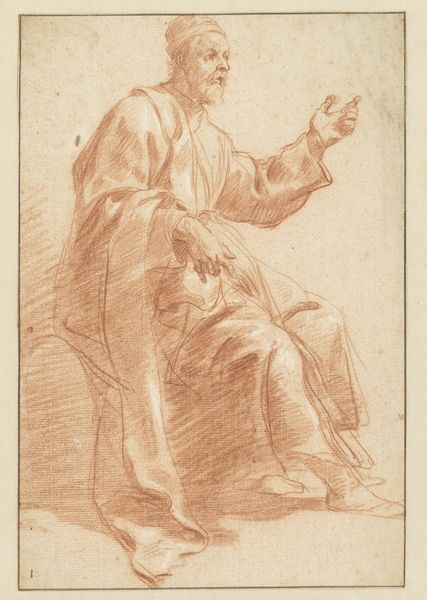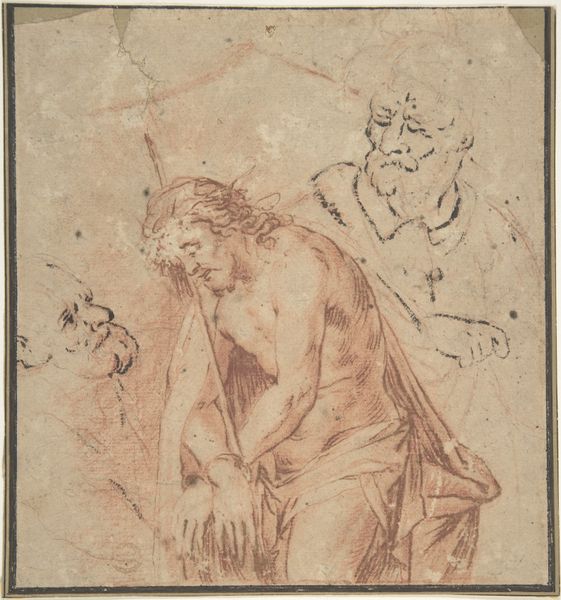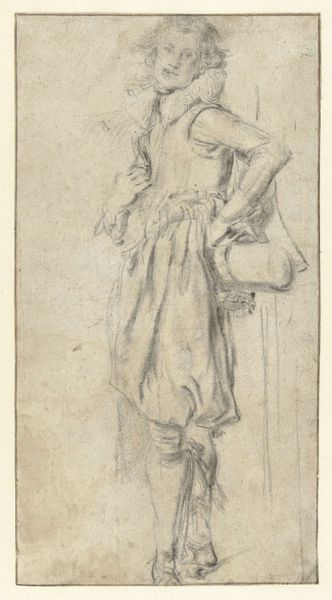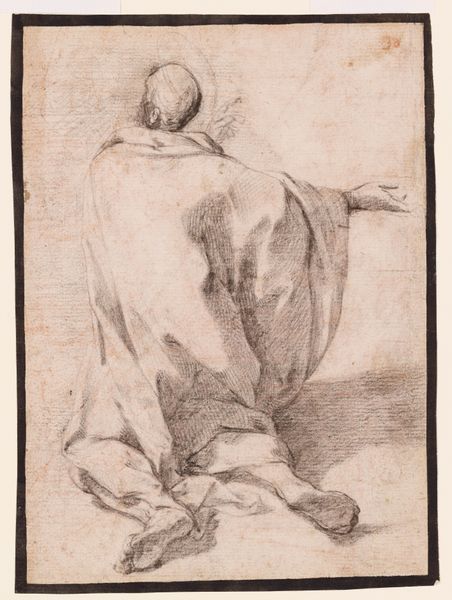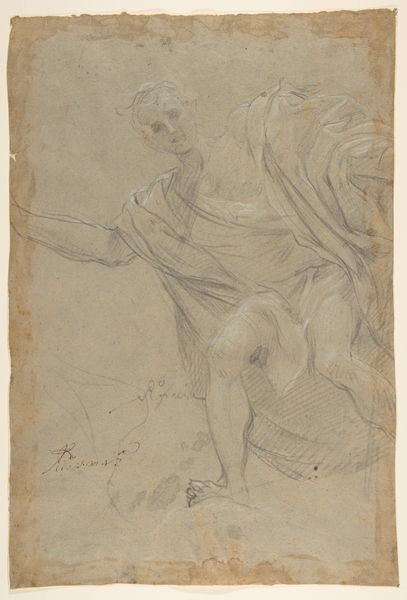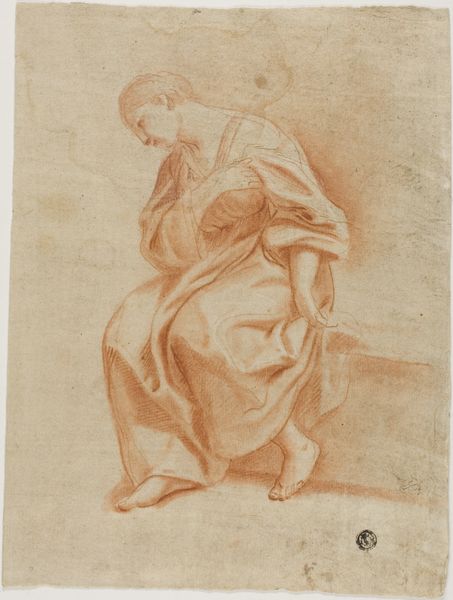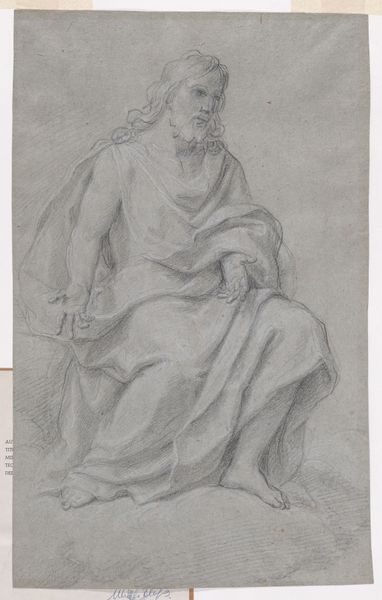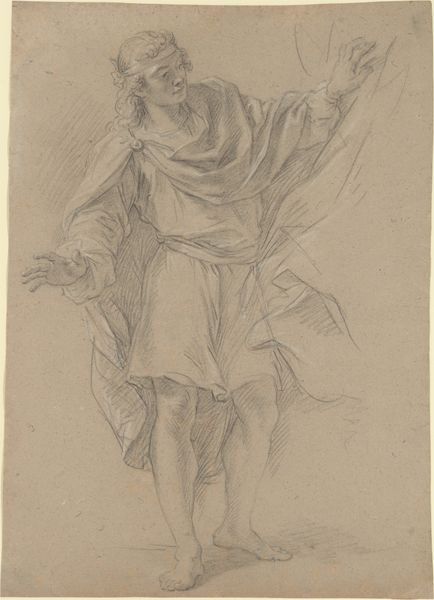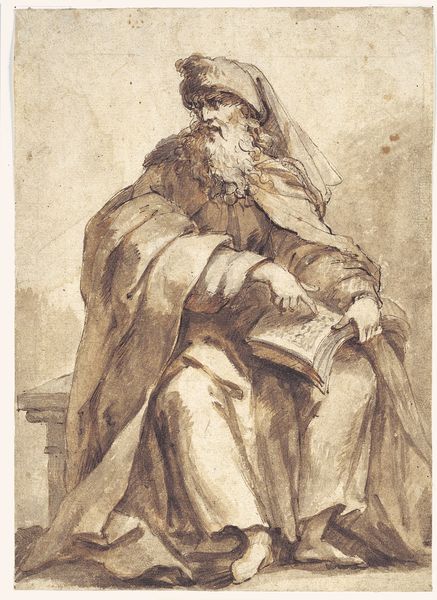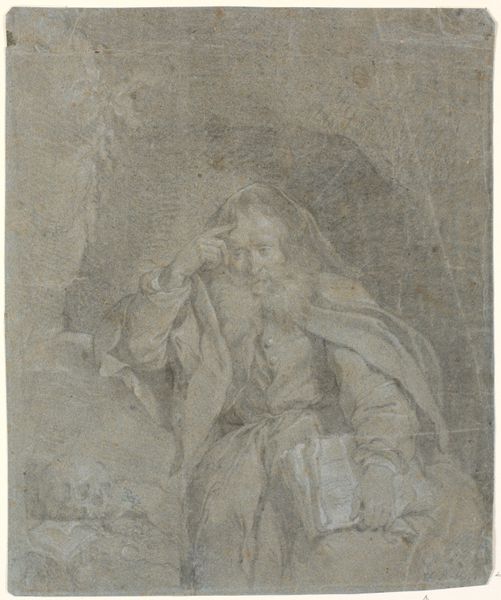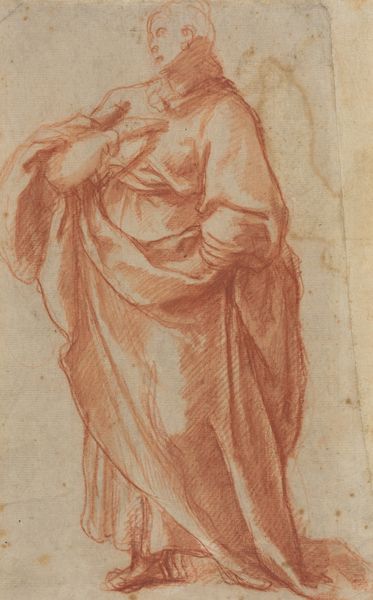
drawing, print, pencil, charcoal
#
portrait
#
drawing
#
baroque
# print
#
pencil sketch
#
figuration
#
pencil
#
portrait drawing
#
genre-painting
#
charcoal
#
history-painting
Dimensions: 18 11/16 x 14 3/4 in. (47.5 x 37.5 cm.)
Copyright: Public Domain
Editor: This is "Seated Old Man Holding a Staff," a drawing by Antoine Coypel, created sometime between 1670 and 1725. It seems to be a study in red and black chalk. What really strikes me is how monumental the figure feels despite being a drawing, there is such a strong use of line and shade to make the form. What compositional choices stand out to you? Curator: Observe how Coypel uses line weight and hatching to create volume. Notice the geometric structure underlying the drapery, how the folds articulate around implied cylindrical forms, particularly in the lap. Do you see the use of the squaring method? It reveals a fascinating element of the creative process itself, which many would prefer to hide. Editor: Yes, I noticed the grid! Was that a common technique? Curator: Precisely. The grid assisted in accurately transferring the composition, likely from a smaller sketch. This suggests preparation for a larger work. It’s also an interesting choice to leave that under drawing visible. Consider how the red chalk animates the skin. See how it contrasts with the almost metallic quality of the charcoal defining the robe. It draws attention to surface quality of the materials themselves. Editor: So, by analyzing these elements – the squaring, the contrasting chalks – we can start to understand Coypel’s technique and intention beyond just a preliminary sketch? Curator: Precisely! These choices, often overlooked, contribute significantly to our understanding and appreciation. Editor: I learned to look for the details in the line-making, like hatch marks and use of the grid itself. Thanks. Curator: Indeed, art unveils its secrets through careful scrutiny of its fundamental elements. It is always worthwhile to slow down and ask "how."
Comments
No comments
Be the first to comment and join the conversation on the ultimate creative platform.
